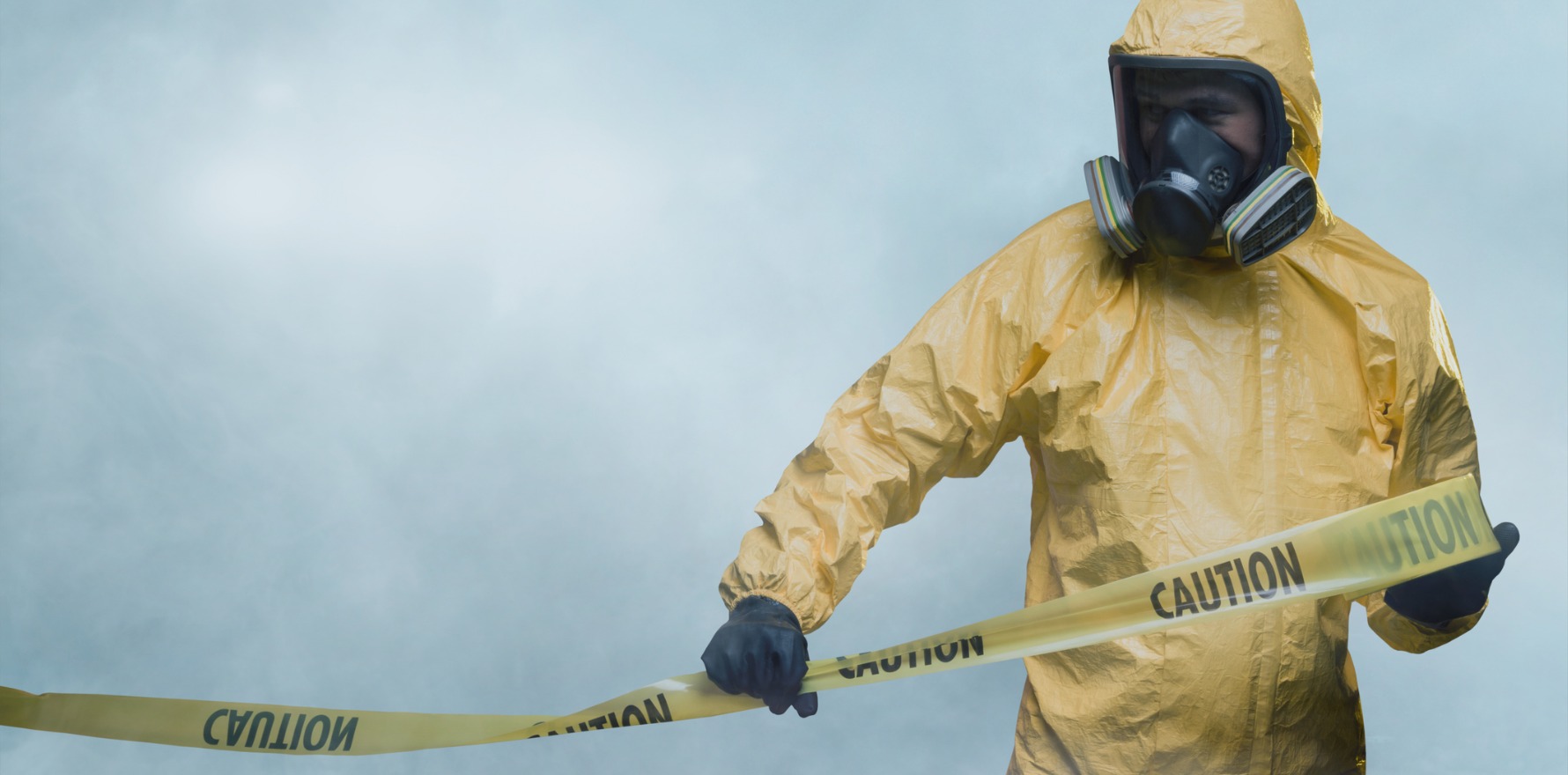Concern is rising about the number of cases of the disease rarely seen in Australia. See how PHNs are faring when it comes to vaccination rates.
Measles cases are spiralling in Australia, with one expert warning of potentially deadly local outbreaks in areas where vaccination rates are low.
The rapidly evolving situation has also prompted Australia’s chief medical officer to release a letter to medical professionals appealing for help to raise flagging vaccination rates.
According to the National Notifiable Disease Surveillance System, there have been 58 cases of measles reported in Australia this year (as of 15 April) – one more than the national tally for the whole of 2024.
New South Wales accounts for the highest number of cases (20), followed by Victoria (18), Western Australia (14), South Australia (three), Queensland (two) and the Northern Territory (one).
So far there have been no measles cases reported in the ACT or Tasmania so far this year (as of 15 April).
Australia’s national aspirational vaccination coverage target is 95%. Reaching this aspirational target provides enough herd immunity to stop the spread of measles and other vaccine-preventable diseases.
Related
According to the Department of Health and Aged Care, as of 30 January, the national vaccination coverage rate for all five-year-olds was 93.76%. The coverage rate for all two-year-olds was at 90.72% and the coverage rate for all one-year-olds was 92.49%.
Australian infectious diseases expert, Associate Professor Griffin, told Health Services Daily the number of measles cases and flagging vaccination rates were cause for alarm.
“I think it is a concerning trend,” he said.
“What we know is, when our rates of protection from vaccination decline and the incidence goes up elsewhere where there have been outbreaks of measles and we see more imported cases that we will start to see local transmission.
“That’s the stage we’re at, at the moment. And the unfortunate reality is, if that continues and the numbers rise, then we’ll start to see some of the more severe consequences as well.
“And this is what the US have seen. I believe there’s been perhaps three deaths so far from measles over there. And really, it’s just a matter of time before we start to see those severe consequences as well, because the trend is certainly in the wrong direction.”
Professor Griffin, who is also director of Infectious Diseases at Mater Health Services in Brisbane and Associate Professor of Medicine at the University of Queensland Medical School, said one of the biggest concerns was if an imported case was to occur in an area where vaccination rates were low, the “potential even for an outbreak is very significant”.
“I don’t think we’ve seen that element of things yet, but if that was to happen, and then our situation could rapidly deteriorate,” he said.
Health Services Daily has analysed immunisation data available through DoHAC to highlight the vaccination rates by Primary Health Network across Australia. This analysis has shown a number of PHNs have vaccination rates below 90% in one and two-year-olds.
Rates pick up in five-year-olds, with only two PHNs falling under the 90% mark – the North Coast (NSW) and the Gold Coast (Queensland). However more than half of the nation’s PHNs have vaccination rates under 95% for five-year-olds.
| PRIMARY HEALTH NETWORK | % ONE-YEAR-OLDS FULLY VACCINATED | % TWO-YEAR-OLDS FULLY VACCINATED | % FIVE-YEAR-OLDS FULLY VACCINATED |
| Central and Eastern Sydney | 93.40 | 90.57 | 93.10 |
| Northern Sydney | 94.82 | 92.11 | 93.61 |
| Western Sydney | 92.40 | 90.57 | 94.25 |
| Nepean Blue Mountains | 92.23 | 90.93 | 94.82 |
| South Western Sydney | 82.76 | 88.02 | 93.34 |
| South Eastern Sydney | 93.04 | 91.67 | 94.57 |
| Western NSW | 94.34 | 92.67 | 96.38 |
| Hunter New England and Central Coast | 94.20 | 92.19 | 95.41 |
| North Coast | 86.28 | 85.68 | 89.99 |
| Murrumbidgee | 93.43 | 90.64 | 95.47 |
| North Western Melbourne | 92.26 | 90.34 | 94.57 |
| Eastern Melbourne | 93.19 | 92.07 | 95.00 |
| South Eastern Melbourne | 92.26 | 91.59 | 93.95 |
| Gippsland | 91.57 | 88.99 | 94.92 |
| Murray | 93.71 | 91.85 | 94.91 |
| Western Victoria | 93.56 | 93.01 | 95.67 |
| Brisbane North | 94.03 | 92.41 | 94.42 |
| Brisbane South | 92.59 | 90.97 | 92.85 |
| Gold Coast | 88.08 | 86.00 | 89.67 |
| Darling Downs and West Moreton | 91.33 | 91.27 | 93.43 |
| Western Queensland | 88.67 | 88.11 | 92.18 |
| Central Queensland, Wide Bay, Sunshine Coast | 89.32 | 86.71 | 90.63 |
| Northern Queensland | 91.37 | 90.28 | 92.49 |
| Adelaide | 93.13 | 91.20 | 95.16 |
| Country SA | 90.92 | 89.53 | 93.81 |
| Perth North | 92.06 | 90.26 | 93.16 |
| Perth South | 91.29 | 89.42 | 92.62 |
| Country WA | 89.35 | 85.82 | 91.43 |
| Tasmania | 93.62 | 91.76 | 93.96 |
| Northern Territory | 91.86 | 89.78 | 91.88 |
| Australian Capital Territory | 94.99 | 93.77 | 95.46 |
Further analysis of the data shows the vaccination rates by PHNs for the measles, mumps and rubella (MMR) vaccine that is recommended to be given to children at two years old. Not a single PHN has met the aspirational target of 95% for herd immunity.
| PRIMARY HEALTH NETWORK | % TWO-YEAR-OLDS VACCINATED FOR MEASLES/MUMPS/RUBELLA (MMR) |
| Central and Eastern Sydney | 92.05 |
| Northern Sydney | 93.37 |
| Western Sydney | 92.13 |
| Nepean Blue Mountains | 91.92 |
| South Western Sydney | 89.59 |
| South Eastern Sydney | 92.92 |
| Western NSW | 93.98 |
| Hunter New England and Central Coast | 93.08 |
| North Coast | 87.62 |
| Murrumbidgee | 92.37 |
| North Western Melbourne | 92.25 |
| Eastern Melbourne | 93.58 |
| South Eastern Melbourne | 93.10 |
| Gippsland | 90.48 |
| Murray | 93.27 |
| Western Victoria | 93.91 |
| Brisbane North | 93.62 |
| Brisbane South | 92.79 |
| Gold Coast | 87.32 |
| Darling Downs and West Moreton | 92.53 |
| Western Queensland | 90.23 |
| Central Queensland, Wide Bay, Sunshine Coast | 87.99 |
| Northern Queensland | 91.80 |
| Adelaide | 92.91 |
| Country SA | 90.68 |
| Perth North | 91.65 |
| Perth South | 91.11 |
| Country WA | 88.28 |
| Tasmania | 93.24 |
| Northern Territory | 92.02 |
| Australian Capital Territory | 94.78 |
It’s not just the low vaccination rates that have the government concerned. In a letter released by the nation’s CMO Professor Anthony Lawler today, the recent increase in confirmed cases in Australia were most commonly in unvaccinated and under-vaccinated adults aged 20-49 years.
“I am concerned by declining vaccination rates, which currently sit below the target of 95% required for herd immunity. I urge you to remind your patients that vaccination is the best protection against measles,” Professor Lawler wrote.
“Measles is a very serious and highly transmissible disease. In an unvaccinated or under-vaccinated population, a single contagious person can potentially infect up to 18 other people.
“Measles can cause complications in up to one in three unvaccinated people. Significant complications include brain swelling, pneumonia, pregnancy loss, and lasting disability such as deafness, seizures, and serious movement problems.
“A small number of people die from progressive brain inflammation many years after their initial infection.”
The combination measles vaccine is recommended for:
- children aged 12 and 18 months
- adolescents and adults born since 1966 who have not received two doses of a measles-containing vaccine
- infants aged 6 months to less than 12 months who may be travelling overseas or to high-risk areas
Vaccination is important for adults with higher risk of exposure, particularly:
- people travelling, or returning from, overseas
- healthcare workers
- childhood educators and carers, and
- people who work in long-term care and correctional facilities
Professor Griffin said it was also important for medical professionals to be on high alert for cases of measles. Given it has been decades since a major outbreak in Australia, he said many younger doctors may not have even seen the disease.
“The thing that you’re not going to see a lot of, but the number of times you’re able to miss this needs to be zero,” he said.
“And there are ways of teaching it so that people have that awareness that there should be that constellation of symptoms in the back of their mind that is a massive red flag.
“And as soon as you have any suspicion of this infection because of its public health impact, you need to speak to someone straight away. The way that I teach it is the three C’s, so cough, coryza (runny nose), conjunctivitis, and a rash that spreads down. That’s the constellation of symptoms that that should ring those alarm bells in the back of somebody’s mind, that they need to consider that.”





